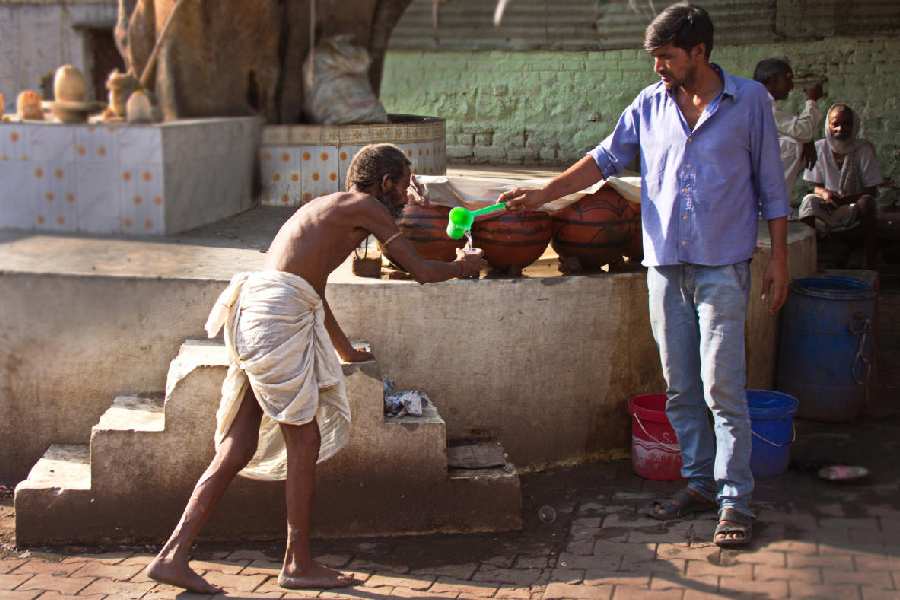Book: INDIAN PHILOSOPHY, INDIAN REVOLUTION: ON CASTE AND POLITICS
Authors: Divya Dwivedi and Shaj Mohan
Published by: Westland
Price: Rs 799
This collection of essays, short pieces and interviews is an exercise in exemplary courage; the courage to call out the authoritarianism of the regime and the inequities of caste that have plagued India since millennia. The work will be read and appreciated by philosophers and those interested and invested in India’s present and in the evolution of its past, especially in relation to the peculiar social structure built around caste. The introduction by Maël Montévil clearly sets out why the book begins with the title, “Indian Philosophy”, and helps set up the terms of reference which may be lost to those readers who are not familiar with the philosophy of deconstruction. For the vast majority of readers, what marks the book is the analysis of the egalitarian political desire of the lower caste majority and the possibility and the potential of the philosophy that the authors espouse. At a more general level, the book offers an excellent contemporary history of the rise of Hindu nationalism, which is equated by the authors with upper caste supremacism that was able to effectively control and dominate subaltern society. This was not confined to ‘Hinduism’; caste lines permeated all religions in the subcontinent but it remained convenient for upper caste elites to present the problems as ‘Hindu majority versus religious minorities’.
The essays thus provoke the reader to reflect on what he/she faces at an every-day level in today’s India. The very first entry refers to the pathology of a ceremonial society where the theatre of ritual can only be dismantled by the writer who fights for the right to speak or stay silent, refusing to be seduced by “ceremonialized quotes”. It is followed by an excellent delineation of the evolution of caste society in India demonstrating how, despite the horror of discrimination, lower castes were absorbed into the Hindu fold in spite of themselves; this, the essay argues, was because of the way in which the upper castes created a majority under the category of religion. This is an important observation, giving us an entry point to understand the ways in which right-wing parties have consolidated the upper caste core and the lower caste base. Another powerful, visceral essay in the first section refers to the rape of a Dalit girl in UP in 2020 which had virtually no effect on the ruling BJP government. For the writers, the death of the girl, following assault and delayed treatment, was a case of institutional murder with an upper-caste police administration entirely complicit with the state administration in treating the victim as garbage. The case was part of a recurring pattern of violence perpetrated by upper castes on the bahujan majority. Even worse, according to the writers, was that the bahujan voice was erased by upper caste cunning, something that was part of an older history of domination and something that is continuously perpetuated in elite academia, which speaks for the Dalits and brings them into a discourse that they continue to wield. The enemy then, according to the authors, lies within us and not just in the entity of the right-wing party that wields absolute power.
This power of co-option is manifest in the banality of the public discourse that the authors draw attention to. The discourse is faithful but blithe in its pronouncements of erosion of constitutional values. It does not reflect the reality of the violation of the most fundamental right enshrined in the Constitution — the right to assembly. On the ground, the right to assembly is denied as restrictions on it are imposed by the ancillary associations of the ruling party and supported by the media and the police. Underlying this brutal manifestation of power is the willful subversion of the real majority, the people oppressed for centuries by caste under what the authors call the construction of the “Hindu hoax”. The very idea of the Hindu majority was a construction to mask the obvious division between a small upper caste minority and a vast majority that was servile and discriminated against. This is a powerful argument and it underpins the book while detailing several recent instances of arbitrary action against intellectuals, activists, and human rights campaigners.
Two other features of the book are striking. It is worthwhile to note that many of the essays that form the anthology were not allowed to be published by sections of the Indian media. The other is the extraordinary degree of friendship and solidarity that the authors enjoy within a larger network that keeps alive the spirit of enquiry and interrogation. The appreciation is evident when we look at the exemplary editing and introduction to each of the essays by Maël Montévil and is a testimony to the virtue of friendship or maitri that Babasaheb Ambedkar spoke of.
Hopefully, readers would have the courage to read and absorb this powerful book and reflect on the salience of its propositions for restoring some semblance of democratic freedom in India.

